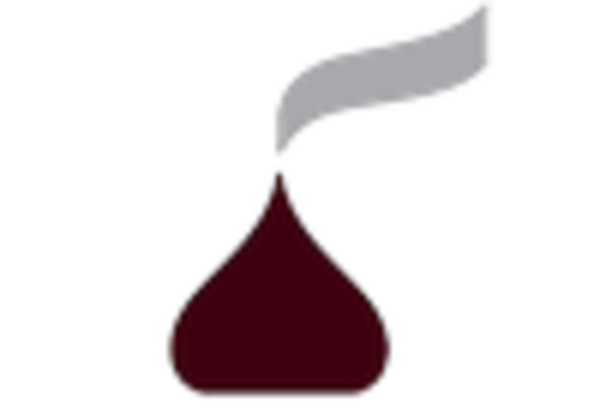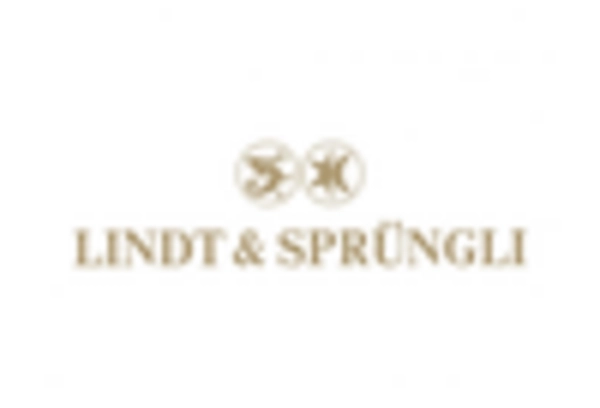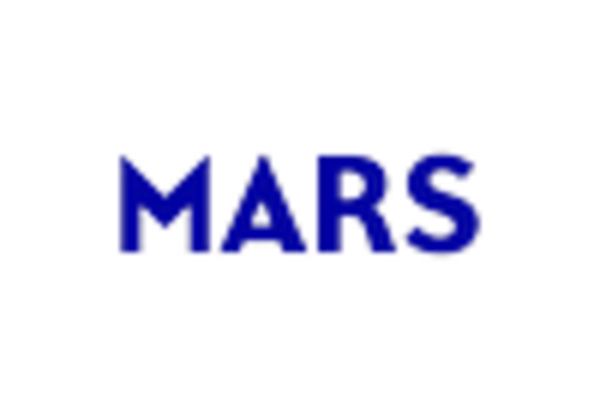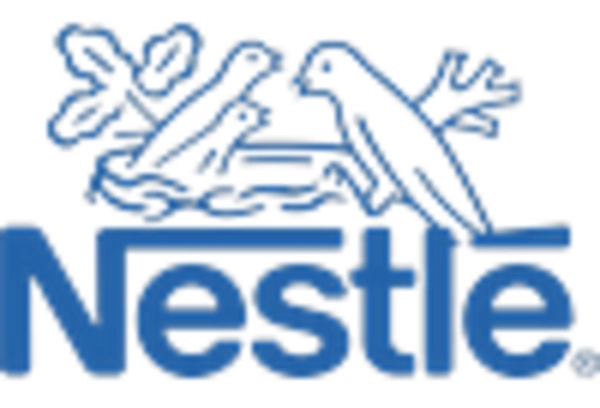The sugar free-chocolate market in Brazil is characterized by a dynamic competitive landscape, driven by increasing health consciousness among consumers and a growing demand for low-sugar alternatives. Major players such as Lindt & Sprüngli (CH), Hershey's (US), and Nestlé (CH) are strategically positioning themselves through innovation and product diversification. Lindt & Sprüngli (CH) has focused on premium offerings, emphasizing quality and taste, while Hershey's (US) has been expanding its product line to include more sugar-free options, catering to a broader audience. Nestlé (CH) is leveraging its extensive distribution network to enhance market penetration, indicating a collective strategy among these companies to capitalize on the rising trend of health-oriented products.
In terms of business tactics, companies are increasingly localizing manufacturing to reduce costs and improve supply chain efficiency. The market structure appears moderately fragmented, with several key players vying for market share. This fragmentation allows for niche brands to emerge, yet the influence of larger corporations remains significant, as they possess the resources to invest in marketing and innovation, thereby shaping consumer preferences.
In October 2025, Lindt & Sprüngli (CH) announced the launch of a new line of sugar-free chocolate bars, which utilize a proprietary blend of natural sweeteners. This strategic move is likely aimed at capturing the growing segment of health-conscious consumers who seek indulgent yet guilt-free options. The introduction of this product line not only reinforces Lindt's commitment to quality but also positions the brand as a leader in the premium sugar-free segment.
In September 2025, Hershey's (US) unveiled a partnership with a local Brazilian health food company to co-develop a range of sugar-free chocolate snacks. This collaboration is indicative of Hershey's strategy to enhance its local market presence and tap into the expertise of regional players. By aligning with local brands, Hershey's can better understand consumer preferences and adapt its offerings accordingly, which may lead to increased market share.
In August 2025, Nestlé (CH) reported a significant investment in sustainable sourcing for its sugar-free chocolate products, aiming to reduce its carbon footprint and appeal to environmentally conscious consumers. This initiative not only aligns with global sustainability trends but also enhances Nestlé's brand image, potentially attracting a demographic that prioritizes ethical consumption.
As of November 2025, current competitive trends in the sugar free-chocolate market are increasingly defined by digitalization, sustainability, and the integration of artificial intelligence in product development and marketing strategies. Strategic alliances, such as those seen with Hershey's (US), are shaping the landscape by fostering innovation and enhancing market responsiveness. Looking ahead, competitive differentiation is likely to evolve from traditional price-based competition to a focus on innovation, technology, and supply chain reliability, as companies strive to meet the sophisticated demands of health-conscious consumers.

















Leave a Comment